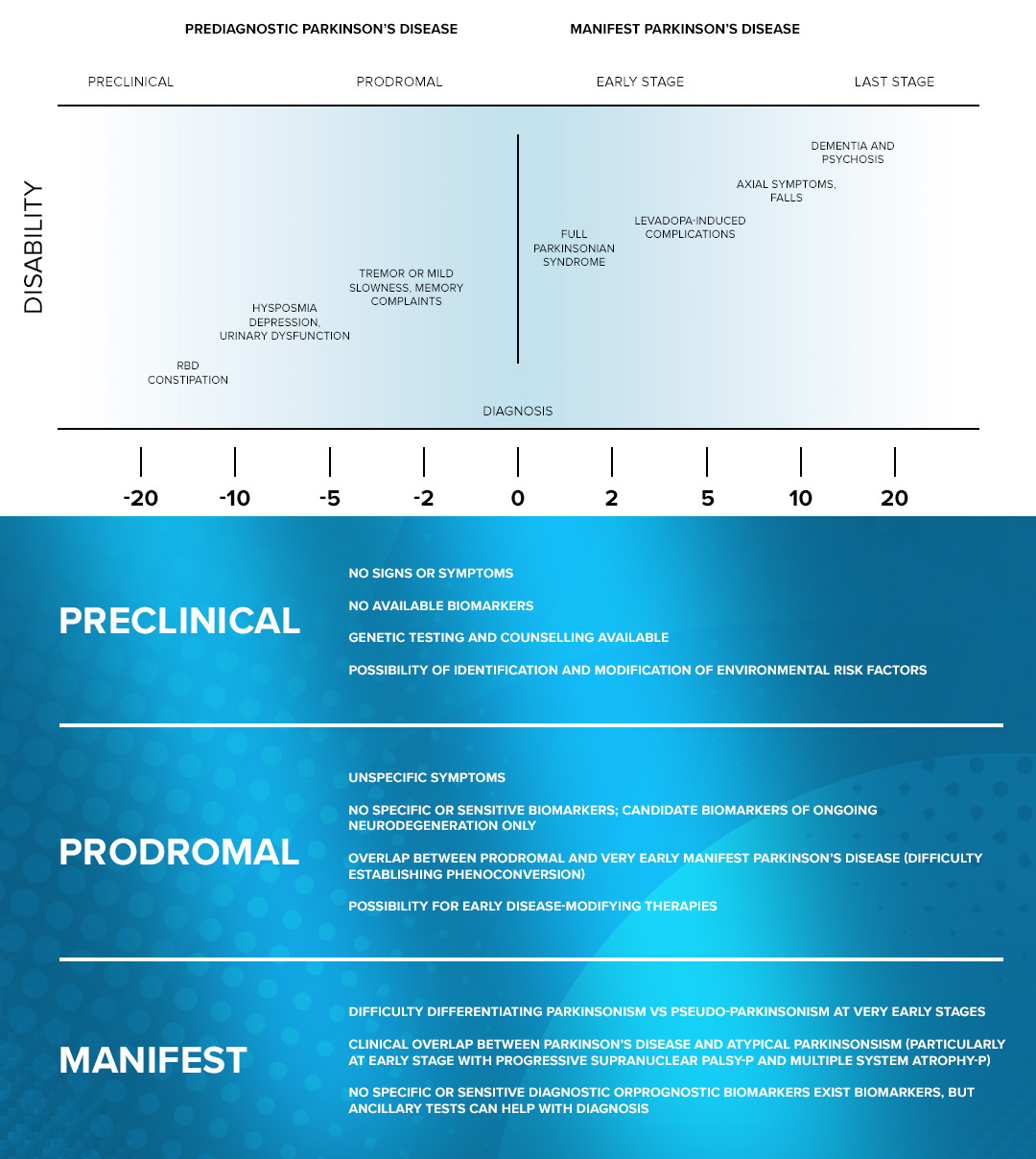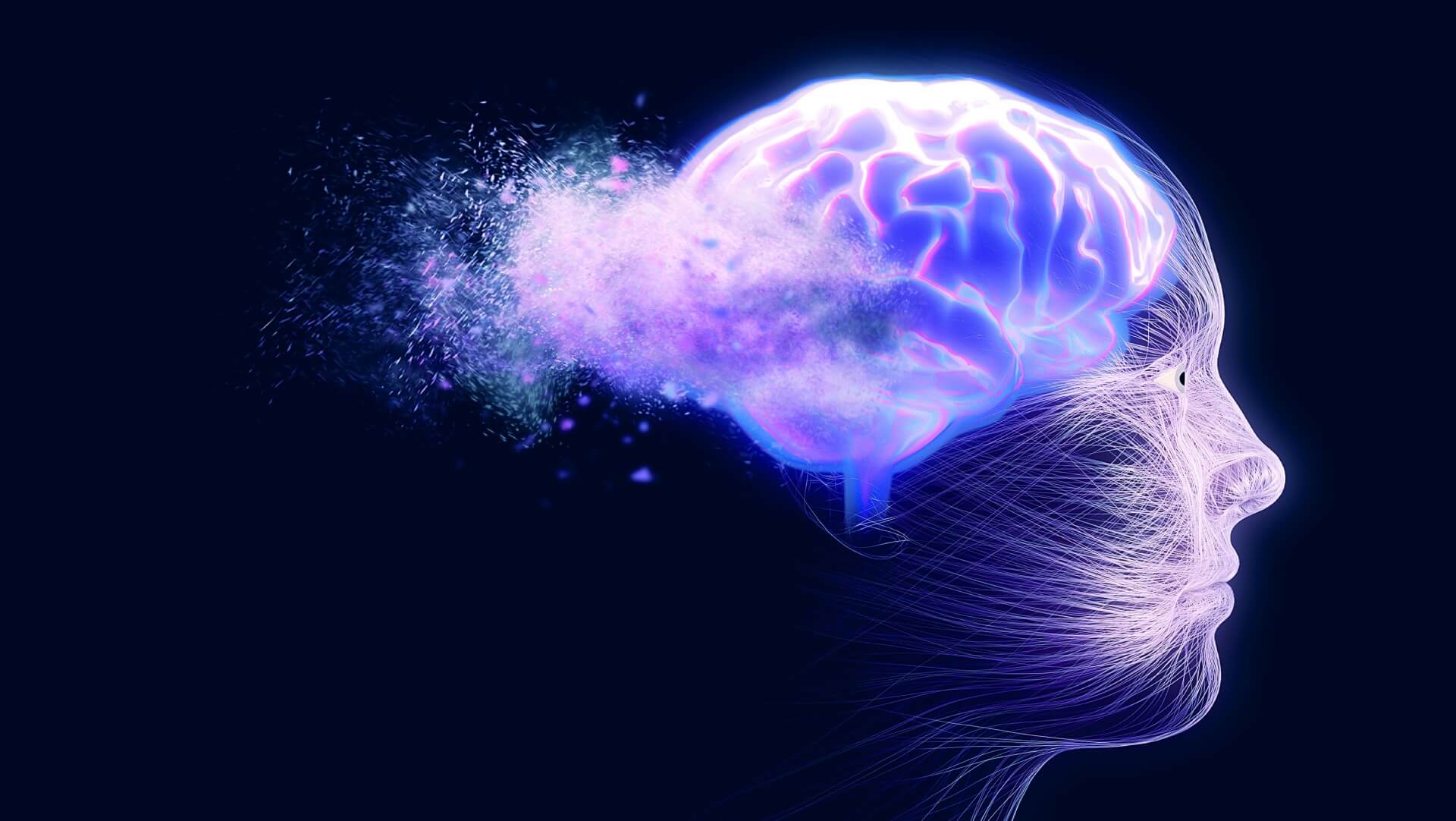Parkinson’s disease, affecting up to 10 million people globally, is characterized by motor symptoms such as tremors, rigidity, and bradykinesia, alongside non-motor symptoms like depression, sleep disturbances, and cognitive decline. Currently, approximately 500,000 people are affected by Parkinson’s disease in America alone. It is a chronic condition as well, which means that it worsens over time and doesn’t go away.
At Gladiator Therapeutics, we understand the impact this can have on those with the disease and their loved ones. That’s why we are dedicated to providing effective treatment options that can help alleviate symptoms and improve overall well-being.
PARKINSON’S CLIENT TESTIMONIAL
Pathogenesis and Clinical Manifestations
The disease progresses through distinct stages, starting in the brainstem and spreading to the cortex, correlating with the clinical manifestation of symptoms in later stages. See the diagram below.

What Causes Parkinson’s Disease?
Scientists do not know the exact cause of Parkinson’s disease, but research and studies are constantly being done. It is believed to be caused by a combination of genetic and environmental factors.
The process is recognized within someone’s brain as particular nerve cells gradually degrade or cease to function, causing a reduction in dopamine levels. Dopamine is a chemical messenger that plays a crucial role in controlling movement and coordination, among other things.
Short-Term and Long-Term Effects
In the short term, Parkinson’s disease can cause symptoms such as tremors, muscle stiffness, and difficulty with balance and coordination. These symptoms can significantly impact a person’s mobility and daily activities.
In the long term, as the disease progresses, symptoms can grow much worse. This can lead to difficulties with speech and swallowing, as well as cognitive changes such as memory loss and dementia.
Unpacking the Symptoms of Parkinson’s
To effectively address the challenges posed by Parkinson’s, it’s vital to understand each of its symptoms in-depth.
Motor Symptoms
Motor symptoms affect your motor skills, which are specific movements of the body’s muscles to perform tasks such as walking or running. Motor symptoms are the most common signs of Parkinson’s and can be the most limiting. These may include:
- Tremors: These are involuntary shaking movements. They are most common in someone’s hands, arms, legs, or jaw.
- Rigidity: Those suffering rigidity will experience stiffness and inflexibility in the muscles can make movement difficult and uncomfortable.
- Bradykinesia: This refers to slowness of movement, making even simple tasks such as getting dressed or eating a challenge.
- Postural instability: People with Parkinson’s disease may find it challenging to maintain balance and may experience frequent falls.
Among these, bradykinesia is often the most significant barrier to day-to-day activities. It slows movement and can cause a variety of complications. This can include everything from having trouble moving your arm when you walk to having a sudden inability to move.
Non-Motor Symptoms
Non-motor skills include functions such as cognitive, sensory, sleep, emotional, and social abilities. Non-motor symptoms that affect these skills can be just as intrusive and wide-ranging as your affected motor symptoms, such as:
- Autonomic dysfunction: Your autonomous nervous system affects several internal systems, such as blood pressure, heart rate, and more. Dysfunction can affect several of them.
- Mood disorders: These can include disorders that cause significant mood changes or periods of depression.
- Cognitive changes: As the disease progresses, people may experience memory loss, confusion, and difficulty with concentration.
- Changes in speech: Speech can become slurred or soft, making it difficult for others to understand.
These symptoms can be complex, often requiring a multi-disciplinary approach to management that may include pharmacological and non-pharmacological strategies.
Life Expectancy
The life expectancy of someone with Parkinson’s disease varies depending on various factors such as age, overall health, and the stage of the disease. On average, people with Parkinson’s disease have a slightly shorter life expectancy than those without it. However, with proper management and treatment, many people can live for decades after their diagnosis.
Treatment Options
While there is currently no cure, several treatments can help manage symptoms and improve quality of life. These include medication, surgery, and lifestyle modifications such as exercise and physical therapy.
At Gladiator Therapeutics, we offer a non-invasive treatment option that can help alleviate symptoms of Parkinson’s disease. Our healing devices use far infrared technology to stimulate the body’s natural healing process and promote tissue repair. This can help reduce pain and stiffness, improve mobility, and enhance overall well-being.
Parkinson’s Treatments
There are various treatments to manage Parkinson’s symptoms. Here’s an overview of the weaponry available in the modern armory.
Medications and Their Efficacy
Medications for Parkinson’s primarily aim to replenish dopamine levels in the brain. This can be effective in alleviating symptoms for some people, and each drug can have different benefits and side effects.
Surgical Interventions
For those whose symptoms have progressed significantly or whose response to medication has become less stable, surgery can offer a more enduring solution. These include:
- Deep Brain Stimulation (DBS)
- Dopamine-producing cell grafts
Surgery is not for everyone, and the decision to undergo a procedure should be made after careful consideration by a neurologist who specializes in movement disorders.
Non-Pharmacologic Approaches
In addition to traditional treatments, non-medication-based therapies can play a key role in managing the symptoms of Parkinson’s.
- Physical therapy
- Speech therapy
- Occupational therapy
- Exercise programs
These non-pharmacologic approaches can complement pharmaceutical interventions, enhance motor function, and improve the overall quality of life.
Treatment Challenges
Current treatments, primarily dopaminergic drug replacement therapies, offer only temporary relief. When PD is diagnosed, patients have typically lost 70-80% of their dopaminergic neurons, complicating treatment efforts.
Mitochondrial dysfunction and inflammation are central to PD pathogenesis, neuronal loss, and progression of the disease.
Impact of Gladiator’s SemiCera® Technology on Parkinson’s Disease
Gladiator’s SemiCera® Technology, used in wound healing, offers therapeutic benefits such as stimulation of healing, prevention of tissue necrosis, increased mitochondrial function, improved blood throw and oxygenation, and anti-inflammatory effects. These properties suggest potential benefits for PD treatment by improving mitochondrial function and reducing inflammation.
What Are the Broader Implications of the Study’s Findings for Parkinson’s Disease Therapy?
Gladiator’s SemiCera® Technology could be a non-invasive and effective adjunct therapy for improving motor performance and increasing dopaminergic cell volume in Parkinson’s disease patients. This could potentially lead to better management of PD symptoms and improvement in patients’ quality of life.
Gladiator Therapeutics’ Role in Parkinson’s Disease Management
Gladiator Therapeutics’ commitment to innovation in the realm of medical devices aligns closely with the needs of Parkinson’s patients:
- Enhancing comfort and mobility with innovative products
- Collaborating with world-renowned neurologists
- Participating in clinical trials
- Providing patient education and support resources
Potential of Gladiator Therapeutics Devices
- Stimulation of Healing
- Prevention of Tissue Necrosis
- Increases in Mitochondrial Function
- Improvement in Blood Flow and Tissue Oxygenation
- Anti-inflammatory Effects
Implications for PD
Given these benefits, Gladiator’s SemiCera® Technology holds potential for PD therapy by:
- Improving mitochondrial function, which is reversible and crucial in PD pathogenesis
- Reducing neuroinflammation, thereby possibly slowing disease progression
- Enhancing overall cellular health and function, which could mitigate some of the motor and non-motor symptoms of PD
Non-invasive, supportive treatment for PD addresses both motor and non-motor symptoms by improving underlying cellular functions.
Contact Gladiator Therapeutics For More Information On Our Devices
Parkinson’s disease is a challenging condition that can have a considerable impact on an individual’s life. Nevertheless, with appropriate treatment and support, people can effectively handle symptoms and sustain an engaged and satisfying lifestyle for an extended duration.
At Gladiator Therapeutics, we are committed to providing effective treatment options for those living with Parkinson’s disease. Contact us today to learn more about how our devices can help improve your quality of life.
Contact Us
Interested in knowing more about our devices or have a question? Contact Gladiator Therapeutics today.

